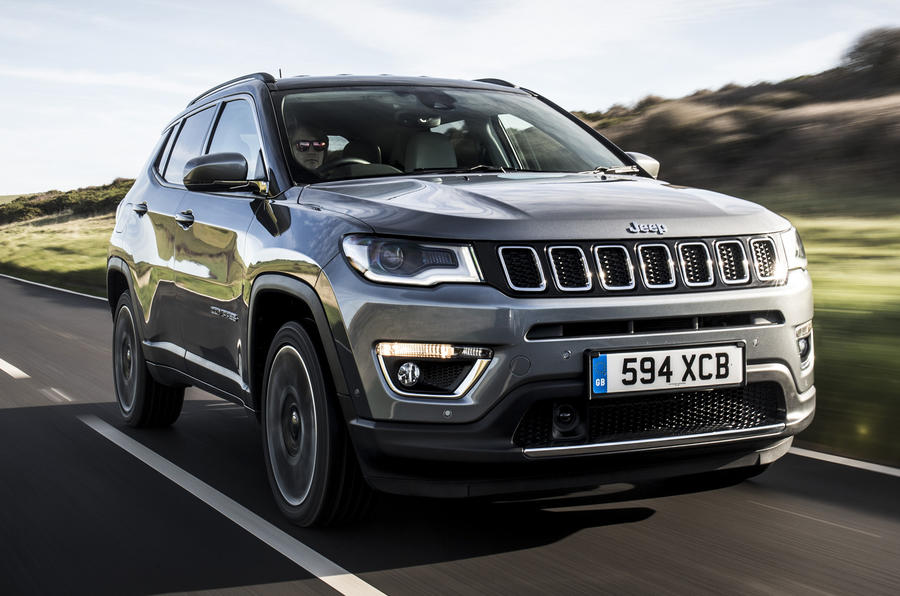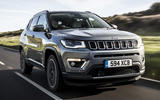What is it?
The Jeep Compass is yet another entrant into a crossover market segment that now contains enough distinct models and derivatives to stretch twice around the globe if you laid them all bumper to bumper. Perhaps.
It’s about time Jeep squared up to the likes of (deep breath) the Ford Kuga, Kia Sportage, Nissan Qashqai, Peugeot 3008, Renault Kadjar, Seat Ateca, Skoda Karoq, Vauxhall Grandland X, Volkswagen Tiguan and so on. Indeed, for a vehicle manufacturer that pioneered the rugged, go-anywhere ethos of what would become the lucrative sports utility vehicle market sector, it has taken an unfeasibly long time to come up with a truly credible competitor in the compact-SUV market sector.
It’s true that a Compass model existed in a previous life, but it was a clunker of the highest order and Jeep didn’t as much withdraw it from sale in 2015 as put both it and the car-buying public out of their respective miseries.
In Jeep’s defence, its focus until now has been on either renewing or introducing models either smaller (in the shape of the funky Jeep Renegade) and bigger (the Jeep Cherokee and Grand Cherokee) than the Compass, and the manufacturer’s growing sales around the globe prove that strategy to be quite a shrewd one.
However, with this segment still growing quickly - Jeep estimates that it will account for two million sales across Europe alone by 2020, up from 1.6m in 2016 - it was essential that this Nissan Qashqai-sized hole in Jeep product portfolio was filled.
There’s a confident swagger about Jeep as a brand, then, and this Compass attempts to marry the somewhat contrasting aims of being a hard-wearing, rugged, all-terrain 4x4 and a stylish, comfortable mode of family transport. Jeep says it wants to position its cars at the ‘authentic off-road capability’ end of this spectrum. As such, it has engineered the Compass with a ‘Chapman strut’ rear suspension because it says this arrangement provides much better wheel articulation than a twist beam and, in theory, should give it more ability in the rough than its competitors.
Other the other hand, this Compass can be specified with snazzy 19in alloys that look eminently scratchable should you venture up a green lane, and a swish two-tone black and light grey interior that doesn’t look like it could withstand being clagged with mud after a hard day on the trails. The Compass does, however, have towing ability if you specify a £650 Towing Pack, and driver assistance features such as hill descent control that are usefully utilitarian.
Jeep’s quest for go-anywhere versatility also means four-wheel drive features heavily across the Compass’s model range, although some front-wheel-drive variants are offered. The four-wheel-drive system, sourced from GKN and also used on the Renegade and Fiat 500X, is one of those clever types that sends all the power to the front wheels when grip levels are consistent and brings the rear axle into play when necessary, and does so quicker than you can even begin to utter the words, “What patch of ice?” - 300 milliseconds to be precise.
You can lock the Compass in four-wheel-drive at the push of a button if you choose, and also a 'Selec-Terrain' driving mode rotary dial with four custom modes: Auto, Sand, Snow and Mud. Our test on dry roads was conducted almost exclusively in Auto mode.






































Join the debate
Add your comment
Missing something
this thread is missing something..,hmm let me see..
tesla, tesla, tesla, Elon musk, 0-62, ancient, future, euphoria, worship etc etc.
I think you're missing something
I just don't get your comment and the relevance to a ICE 4WD SUV review
Mediocre Central.
Autocar wrote:
Feels "dependable"? What does that mean?
Not to mention this is the brand that consistently shows some of the worst dependability results in independent studies.
poon wrote:
Eh up poopy, not seen you around ere for some time.
The C Pillar curse strikes again!
Is it a bug in autocad software?